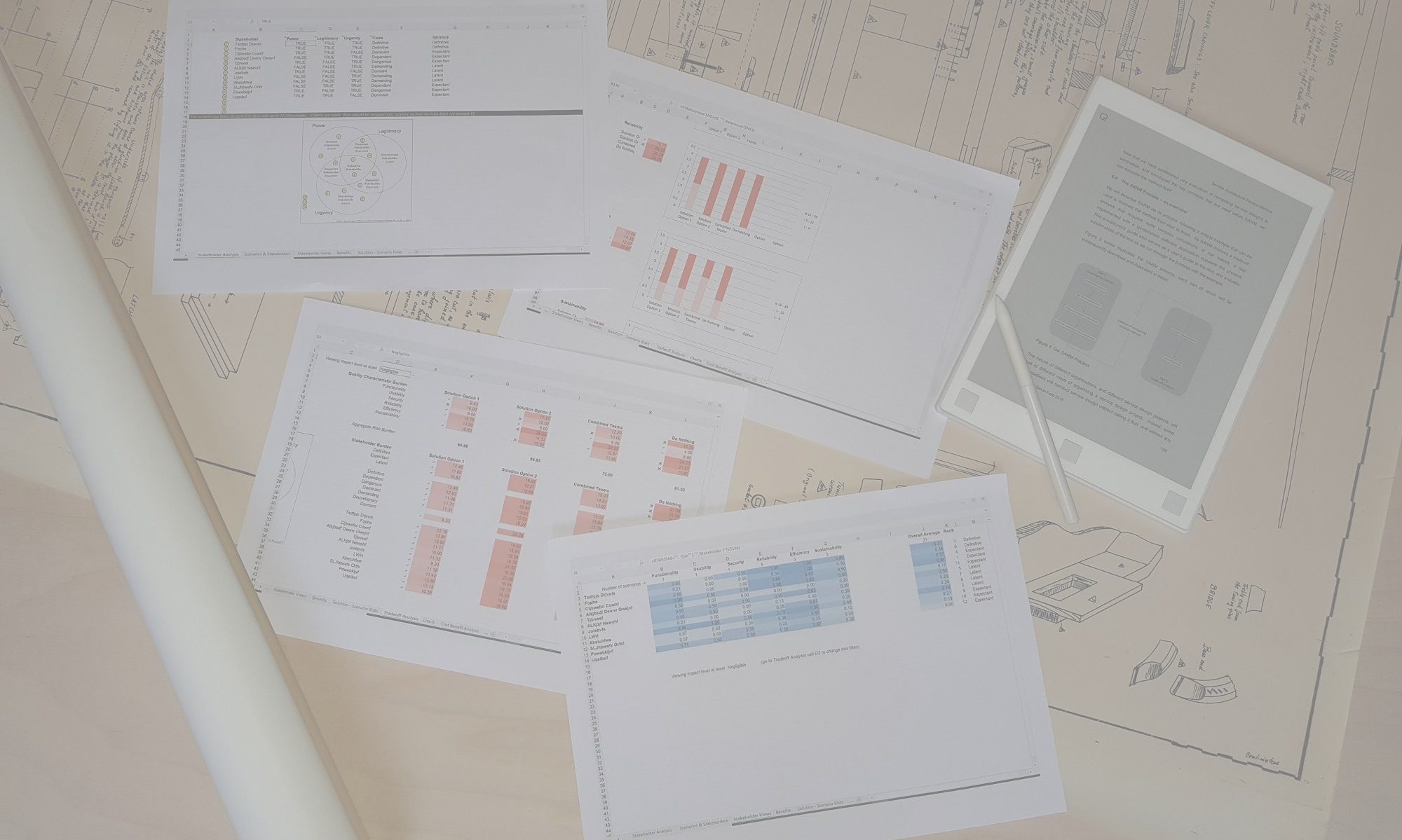I’ve often been asked whether there is, or should be, a lightweight version of SARM. Something that might be completed in a day, perhaps even just a few hours, which can at least give architects confidence in their decision and provide valuable evidence of the evaluation that was undertaken.
The good news is that “SARM lite” has been here all along! The process, and the tool, will work just as well if you use the bare minimum elements to complete an analysis, leaving the remaining worksheets blank. So if you’re happy to do the evaluation without any cost benefit analysis, skipping being able to explore the effect of different architectures on non-financial benefits, then hide the “Benefits” and “Cost Benefit Analysis” worksheets, leaving them blank.
And if you don’t want to view the trade-off analysis from the perspectives of stakeholders and stakeholder classes, you can also hide the “Stakeholder Analysis” worksheet, leaving that blank too. Although you will still need to define the scenarios in the “Scenarios & Stakeholders” worksheet, the only additional effort needed to complete that step is to categorise each scenario according to the quality model and determine its impact. The big effort of populating the matrix to record stakeholder interest in all the scenarios disappears when there are no stakeholders in the analysis.
With this shortened version, the whole process is reduced to just identifying the scenarios, classifying them and specifying their impact, then you can jump straight to the trade-off analysis by assessing the Solution – Scenario Risks and reviewing the results on the Tradeoff Analysis worksheet. The process could be completed very quickly, but of course you have to know your architecturally significant requirements, and be able to describe your candidate architectures. And perhaps you might miss the added insights you could gain from analysing the stakeholders, costs and benefits!

